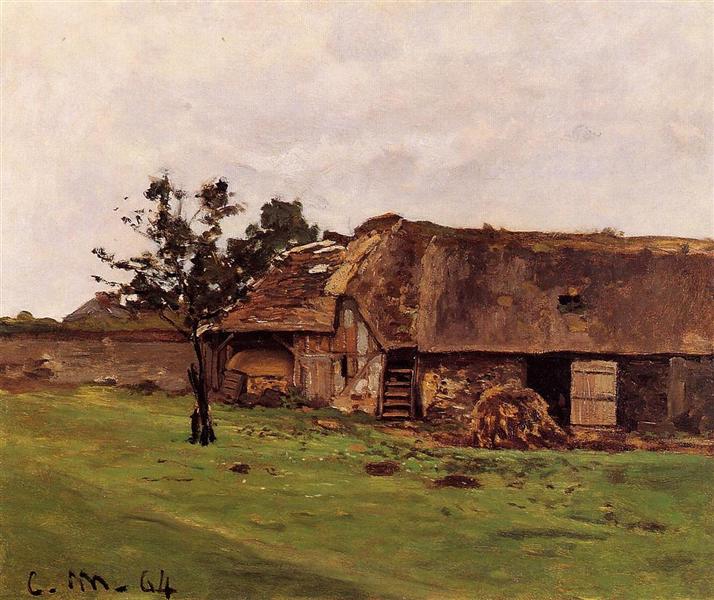Descrizione
Claude Monet's "Farm near Honfleur" (1864) is a clear exponent of the naturalistic style that preceded the development of Impressionism. In this painting, Monet places us in a rural landscape in northern France, a setting that evoked a sense of peace and simplicity, uncommon in the works of his time. Because of its context, he delved into a more direct and authentic representation of agricultural life, a subject that often tries to go unnoticed in art history.
From the first glance, the composition is presented in an almost panoramic approach. The farm, located towards the right side, seems to emanate an air of familiar warmth; it is not a magnificent building, but a modest and functional home, which invites the viewer to an intimate connection with the rural surroundings. The use of diagonal lines emerging from the dirt road that runs through the painting guides the eye towards the farm building, creating a sense of depth and movement that captures the observer.
The colours of Farmhouse Near Honfleur are another of Monet's most striking features. Monet uses a natural colour palette that ranges from earthy browns to vibrant greens, with a subtle hint of blue suggesting the sky and shadows. The luminosity of the sun, which translates into bursts of light on the building and the surrounding countryside, enhances the feeling of a splendid day, a recurring motif in Monet's work. The technique of applying loose, rapid brushstrokes, characteristic of later Impressionism, is intertwined with the desire to capture the changing light of the scene, even in this less radically experimental work of his early career.
Also fascinating is the presence of nature in the piece, which not only serves as a background for the farm, but becomes another character within the pictorial narrative. The trees around the structure, as well as the vegetation in the foreground, are treated with a freedom that anticipates the explosion of color and form that would characterize Impressionism. Here, the flora does not just decorate; it tells stories of life and work in the countryside.
It is important to note that although there are no human figures visible in the scene, it radiates a vital presence. The absence of human characters allows the viewer to imagine the daily activity in this agricultural refuge. It is a setting that speaks of labor and tranquility, where each leaf and each shadow can whisper the story of those who live and work on this farm. The lack of figures, furthermore, suggests a universality in the agricultural experience, allowing the viewer to project themselves and feel a connection with rural life.
The work is also a reflection of an era in France, where Impressionism was beginning to take shape, but which still maintained much of the academic structure of its predecessors. This work by Monet can be considered a bridge between the detailed representation of the 19th century and the new approach of capturing the effect of light and the atmosphere of the present moment, which would be consolidated in his future work.
With Farmhouse Near Honfleur, Claude Monet does not simply offer us a landscape, but invites us to experience the serenity of a rural world in harmony. This work is an early manifestation of his mastery that would eventually blossom into his most renowned masterpieces, and remains, in its simplicity, a delicate reminder of the beauty of the everyday.
KUADROS ©, a famous painting on your wall.
Hand-made oil painting reproductions, with the quality of professional artists and the distinctive seal of KUADROS ©.
Painting reproduction service with satisfaction guarantee. If you are not completely satisfied with the replica of your painting, we will refund 100% of your money.

